These Traeger Beef ribs are so tender, mouthwatering, flavorful and juicy, they’re addictive! The dry rub creates a delicious, crusty bark, you don’t even need to add BBQ sauce. The Traeger smoker is perfect for smoking low and slow, creating a truly memorable smoked meat experience. I’ll share my secrets to the best smoked ribs, in a few easy steps!
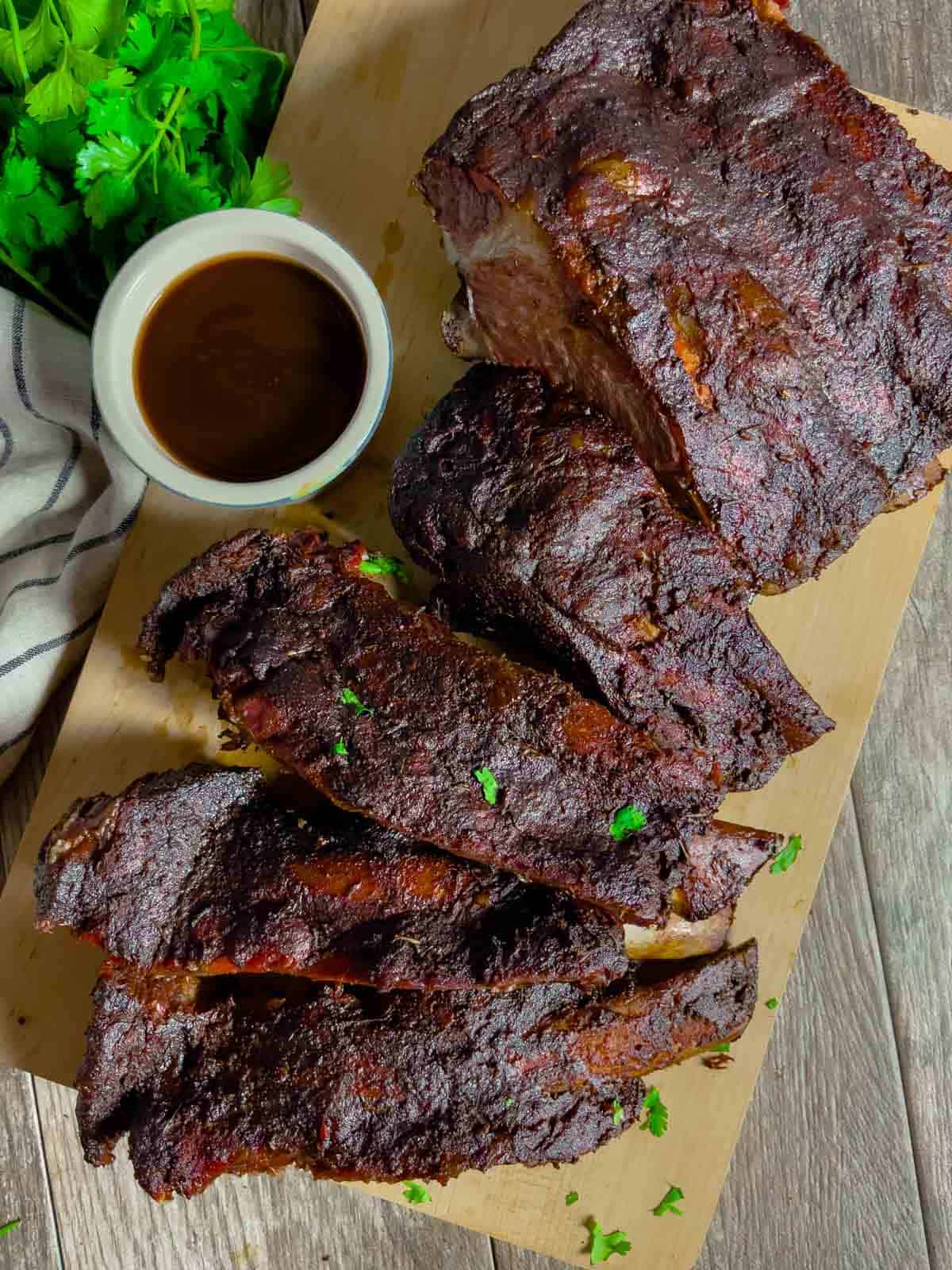
If a rack of tender beef ribs is what you’re looking for, you’re in the right place! There’s nothing like barbeque beef, smoked low and slow, with a luscious, crusty bark and a perfect smoke ring, am I right?
Smoked beef ribs are something I never thought I’d crave. I’m more of a smoked baby back ribs kind of gal, but once I tried these, smoked to perfection, that sealed the deal. They're are now a staple in our house along with this amazing Smoked Flank Steak, which goes from grill to plate in about an hour, and is so tender, juicy and delicious. It's truly one of my favorite things along with these ribs.
Serve these up with some Cilantro Lime Coleslaw and Cheddar Biscuits and you have a totally decadent meal with the best leftovers (if there ARE any leftovers). Follow that richness up with some berry goodness with my Lemon Raspberry Bundt Cake or this super easy Strawberry Clafoutis topped with sugar-free whipped cream. So, so good.
We’re into backyard grilling year around, so every season is smoking season for us. Smoking on your Traeger isn’t just for your summer backyard party! Creating the best smoked meat is very simple – your smoker does most of the work.
Why you’ll love this recipe
- Seriously, these are the best ribs ever. Not kidding.
- This recipe creates the perfect texture and chew. Tender, succulent beef, not quite falling off the bone, but done just right.
- That bark! It doesn’t get better than a rich, smoky outer bark.
- You can use this recipe as a guide for other ribs and smoked meats.
- The instructions are easy to follow – I take the mystery out of how to create divine beef ribs on a pellet grill with a simple smoking method.
Beef rib cuts
Selecting the correct cut is the first step. There are a few popular cuts that are great for barbequing:
Beef back ribs – Most of the meat for this style is between the bones. It comes from the top of the steer, where the ribeye and prime rib cuts have been removed for steaks and roasts. Even though there’s more bone than some other cuts, the flavor is amazing. This is the cut I used for this recipe.
Beef short ribs – These come from the short plate or chuck portion of the cow. From the chuck portion, they’re the ribs that are often too small to be used for bone-in steaks. The meat sits on top of the bone and is often less tender, which makes them perfect for a low and slow cooking method.
When cut from the short plate section, they are often referred to as ‘dino ribs’ because, well, they're pretty big.
Plate ribs – The plate section produces ‘dino’ and beef spare ribs and can be cut to make flanken ribs, popular in Korean cuisine. The plate cut comes from the belly portion of the steer, producing thick, well-marbled portions of meat, attached to the bone.
Chuck ribs – These are leaner, while still containing a good amount of marbling. They are cut from the shoulder and rib portion and are sold bone-in or boneless.
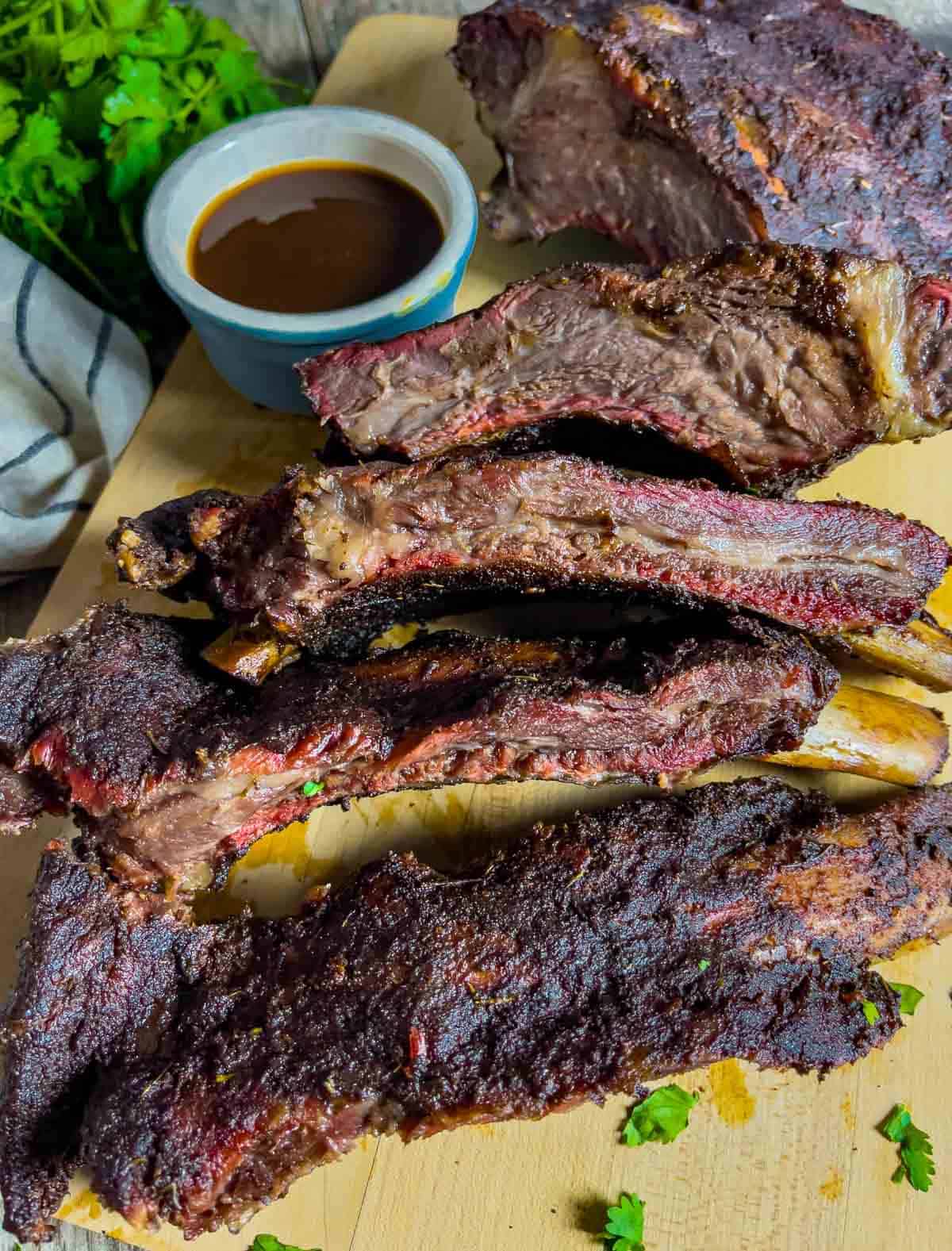
What is the 3-2-1 method?
Smoking ribs 321 is a way to make the most tender rack ever. However, I find that this method tends to produce ‘fall off the bone’ meat, which, technically, means they're overdone. The method I use is a slight variation that produces tender, juicy ribs that still have a little bit of chew and the succulent meat stays on the bones.
3-2-1 refers to time given to each step of the smoking process:
3 – The prepared rack is smoked and spritzed hourly with an apple cider vinegar solution for the first 3 hours directly on the grill. The temperatures for this often vary from 160-190F.
2- They are then wrapped in foil with some apple cider vinegar and smoked for 2 hours. Some folks prefer smoking at 225F for this step, while others turn up the heat to 250-300F.
1 – Lastly, they are taken out of the foil and smoked for a final hour. If using barbeque sauce, you would apply it during this step.
Using this method takes a lot of guess-work out of your smoking and produces tender meat with amazing bark. My directions are slightly different from the 3-2-1 method for making a perfect rack every time.
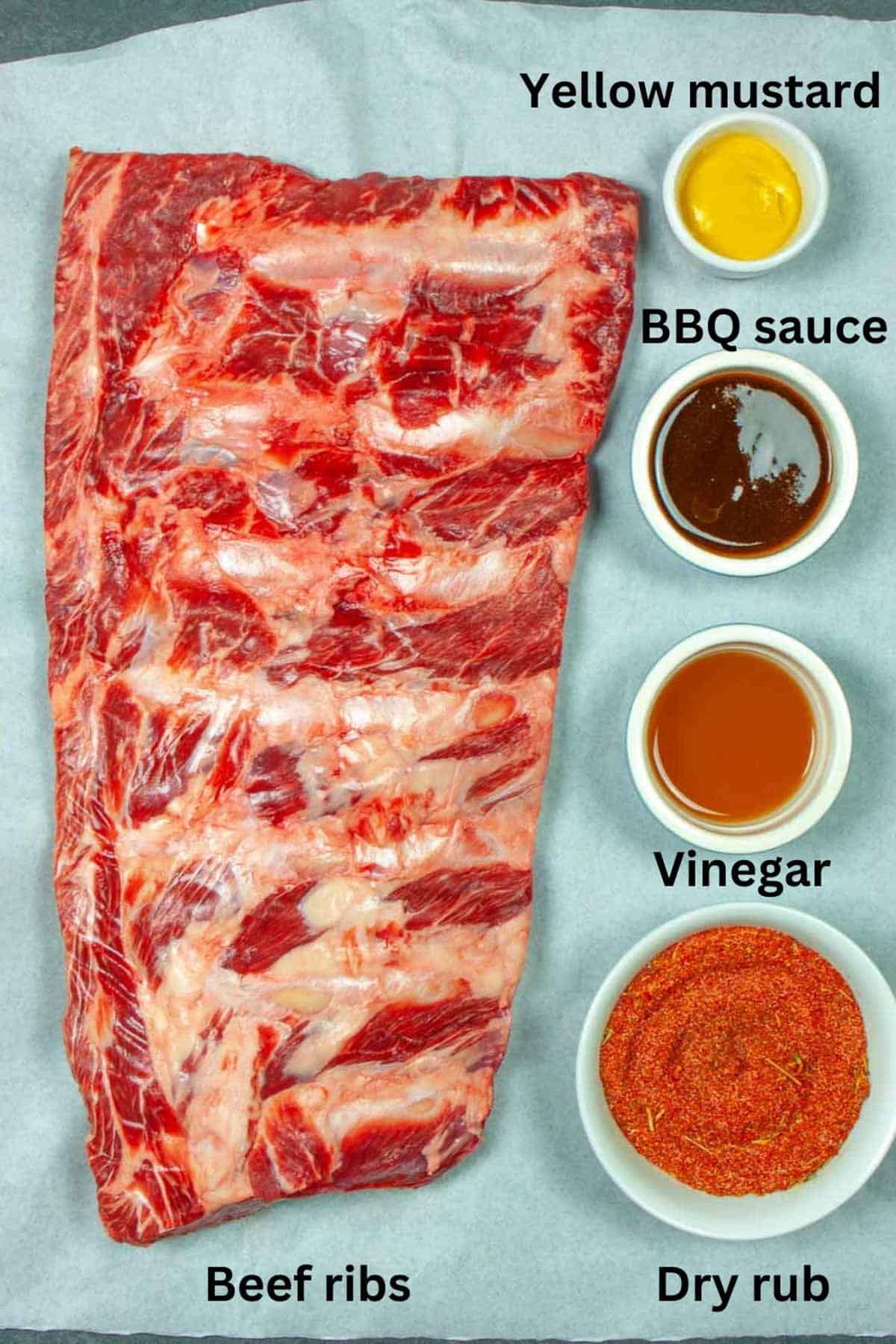
Ingredients
Beef ribs – you can smoke as many racks as you like - I typically fill our smoker. I use the back or chuck cuts.
Yellow mustard – use your favorite brand.
Homemade bbq rub:
This is a sugar-free rib rub. You can certainly add some brown sugar, if you’d like. Check out variations in my Keto Seasoning for Barbeque recipe.
- Sweet paprika
- Smoked paprika
- Salt
- Pepper
- Mustard powder
- Chili powder (I use chipotle)
- Ground cumin
- Ground allspice
- Herbs de Provence
- Onion powder
- Garlic powder
Note: For a low-FODMAP rub, eliminate the onion and garlic powder and consider adding asafoetida (read about this amazing spice in my Asafoetida Ingredient Spotlight). See the complete recipe with variations in my Low-FODMAP Seasoning for BBQ post.
For the spritzing:
- Apple cider vinegar
- Water
BBQ sauce for ribs (optional)
My favorite healthy BBQ sauce for ribs is homemade! Try my sugar-free Backyard BBQ Sauce, or my low-FODMAP Barbecue Sauce. Both are made without ketchup, and oh so delicious. For store-bought brands, I like Kinder's Sugar-Free Roasted Garlic which is keto friendly. Or use a keto and FODMAP- friendly BBQ sauce from Fody Foods such as their Unsweetened Chipotle BBQ Sauce.
To sauce or not to sauce
These ribs are so flavorful and delicious, no sauce is needed. Whether you are a sauce person or prefer no sauce, this recipe will be delicious!
Where to buy beef ribs
You can find a rack of beef ribs at most grocery stores or at your local butcher. They are often available at Costco and they almost always sell them without the membrane attached.
If you can’t find a rack at your local grocery store, you can buy them online.
I find that grass-fed, natural beef has much better flavor than other beef. I'm incredibly fond of Country Natural Beef and Certified Piedmontese. My family eats these two varieties almost exclusively. Their beef is always hormone and antibiotic-free and they use the highest humane standards in raising their livestock. I like that.
How long to smoke
Smoked ribs temperature typically varies from 225F to 250F. Using my method of smoking, which is close to using the 3-2-1 method, smoke time is about 5 hours.
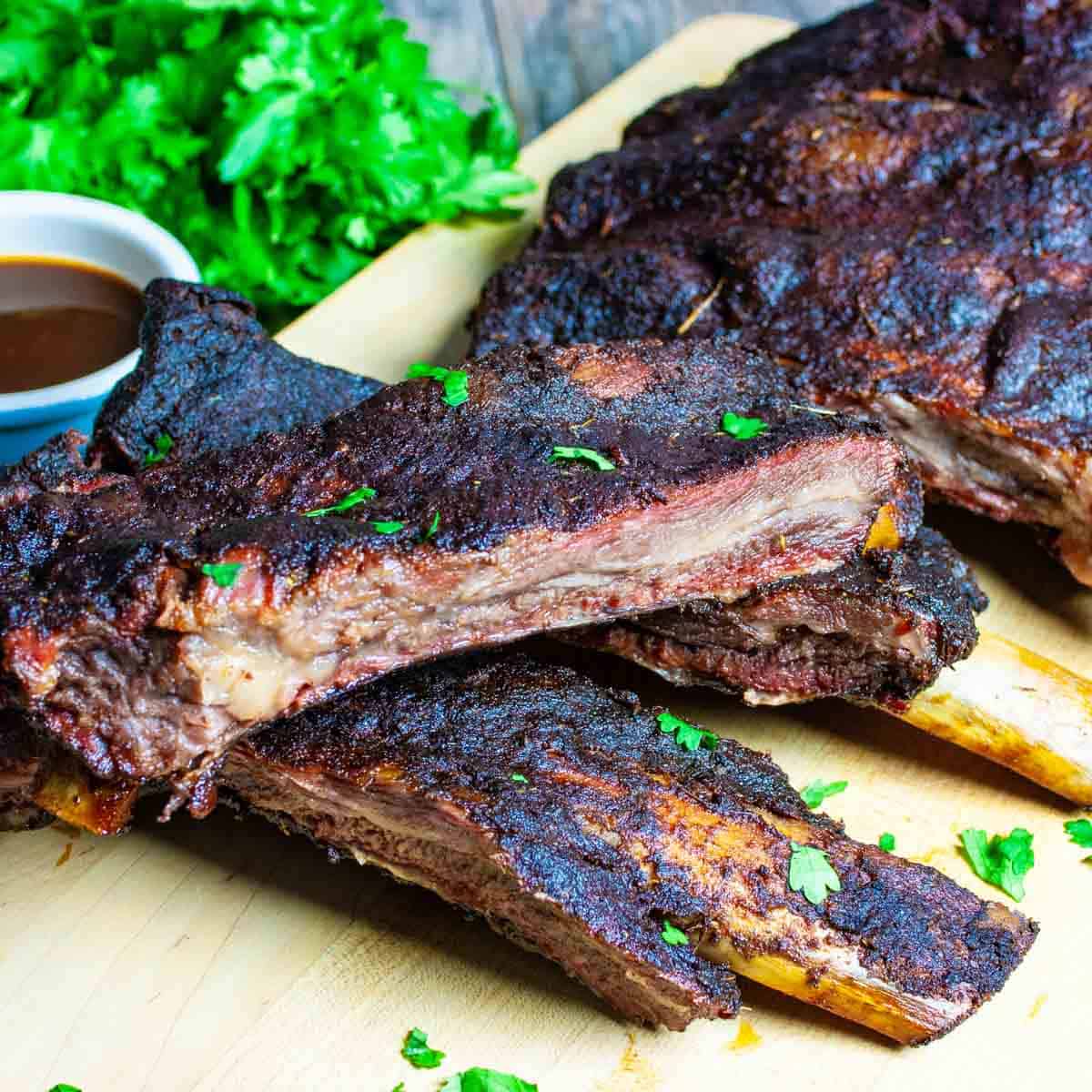
What is the best wood for smoking ribs?
The species of wood used boils down to personal preference. Fruit woods, such as apple and cherry are milder woods and pair beautifully with smoked beef. However, pecan, oak and hickory are also great choices. They are a little stronger than fruit woods and impart a stronger smoky flavor.
Mesquite tends to be a bit too strong and can overpower the flavor of the meat rub.
I mostly use the Traeger Hickory, Maple, Cherry pellet blend. It’s a great ‘all-purpose’ pellet blend that meets most of my smoking needs.
How to know when ribs are done
There are several ways to determine when they're done.
Temperature Probe. Insert an instant read thermometer (or your grill's temperature probe) into the meat between the bones - making sure its not touching bone. When fully cooked, the internal temperature will vary between 190-205F. The internal temperature will continue to rise slightly during the resting phase.
The ‘bend test’. Pick up the rack with BBQ gloves or a set of tongs holding each end. It should be flexible when you bend it, not stiff, which would mean they're not done yet.
Pierce. Pierce the meat between the bones with a skewer. If the meat feels soft and buttery, then they’re done. If there’s some resistance when pulling out the skewer, they’re still undercooked.
Bones. Observe how the meat has pulled away from the bones. When they're done, the meat will shrink and be pulled back from the bones on the ends.
Instructions
Dry the ribs
Removing the excess moisture from the surface is key to making perfect bark and allowing the spices to adhere to your rack. Use a paper towel to pat dry the surface.
Remove the membrane
If the bone side of your rack has a silvery layer of tissue (that kind of looks like a plastic bag is stretched over them), it’s best to remove it. Slide a butter knife under the membrane at one end of the rack, pull up to loosen it, then grab with a paper towel and pull it off in one sheet.
Some folks choose to remove the membrane from the rack and some don’t. Most beef ribs you purchase from the store or butcher will have this membrane removed. If the membrane is left on, the flavor will still penetrate through to the meat, just not as well. It also has a tough, stringy texture some people find unappealing.
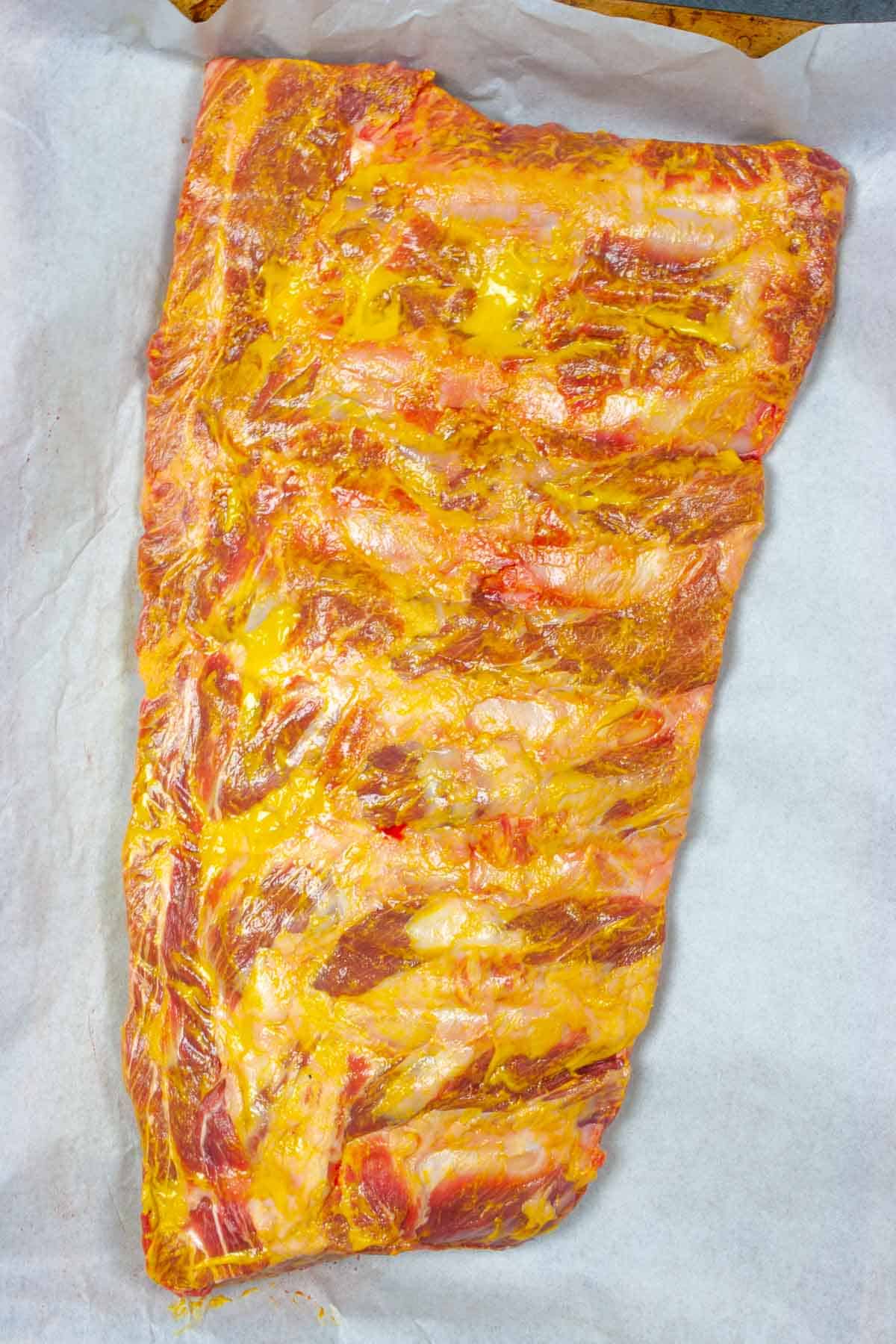
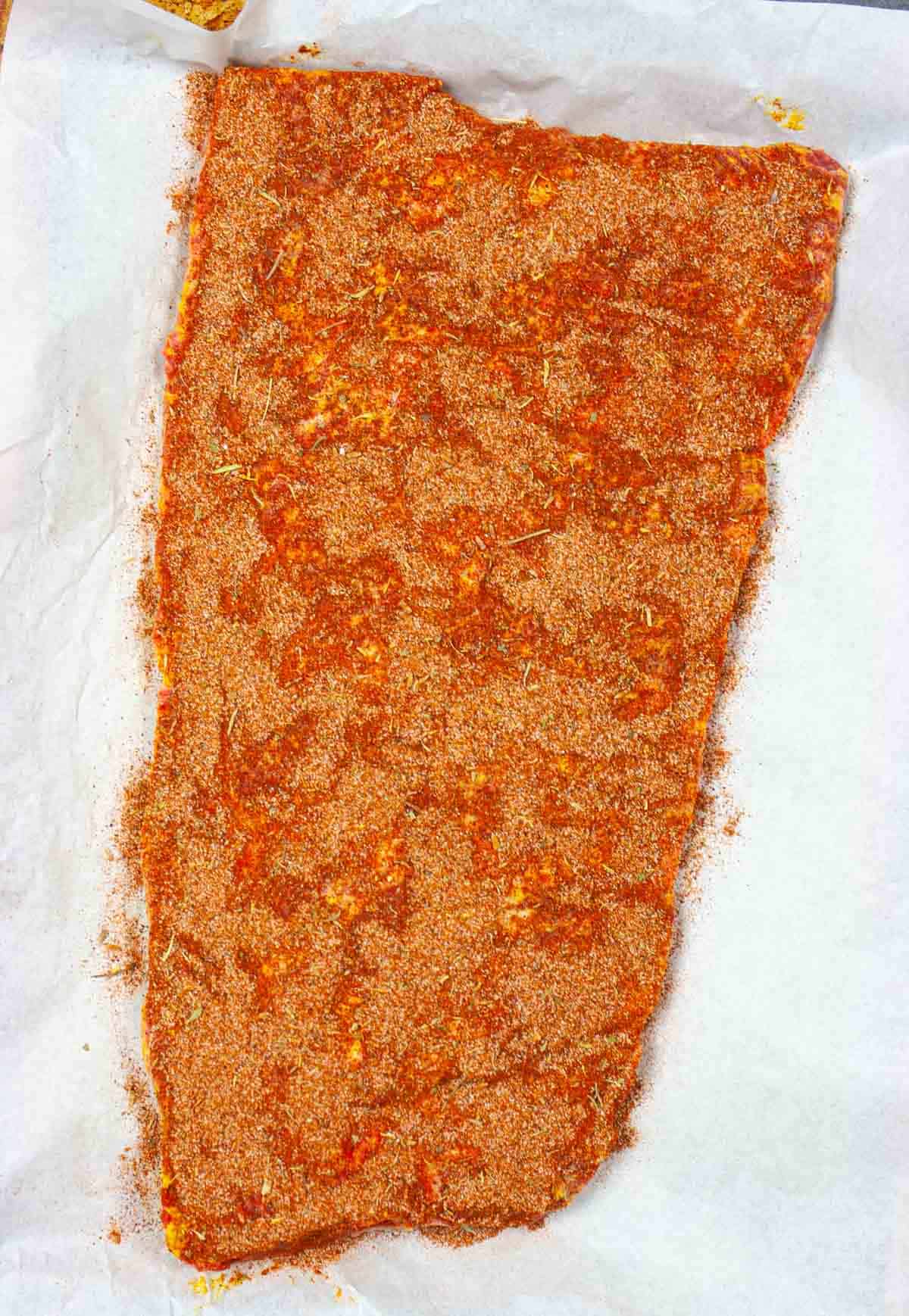
Apply the rub
Smear the entire top and bottom surfaces with your favorite yellow mustard. I love using a mustard rub with BBQ spices. It adds incredible flavor and helps the rub adhere to the rack. However, you can skip this step if you want to. Mustard isn’t necessary to make the best smoked beef ribs, but I do this step and love the results.
Sprinkle the entire top and bottom surfaces with a good coating of dry rub.
TIP: Try applying the rub and mustard the night before you smoke. Allowing the spices to marinate overnight produces intense flavor that really permeates the meat.
Pre-heat the smoker
Set your smoker to the 'smoke' setting and pre-heat for 15-20 minutes. On a Traeger this is between 160-180F.
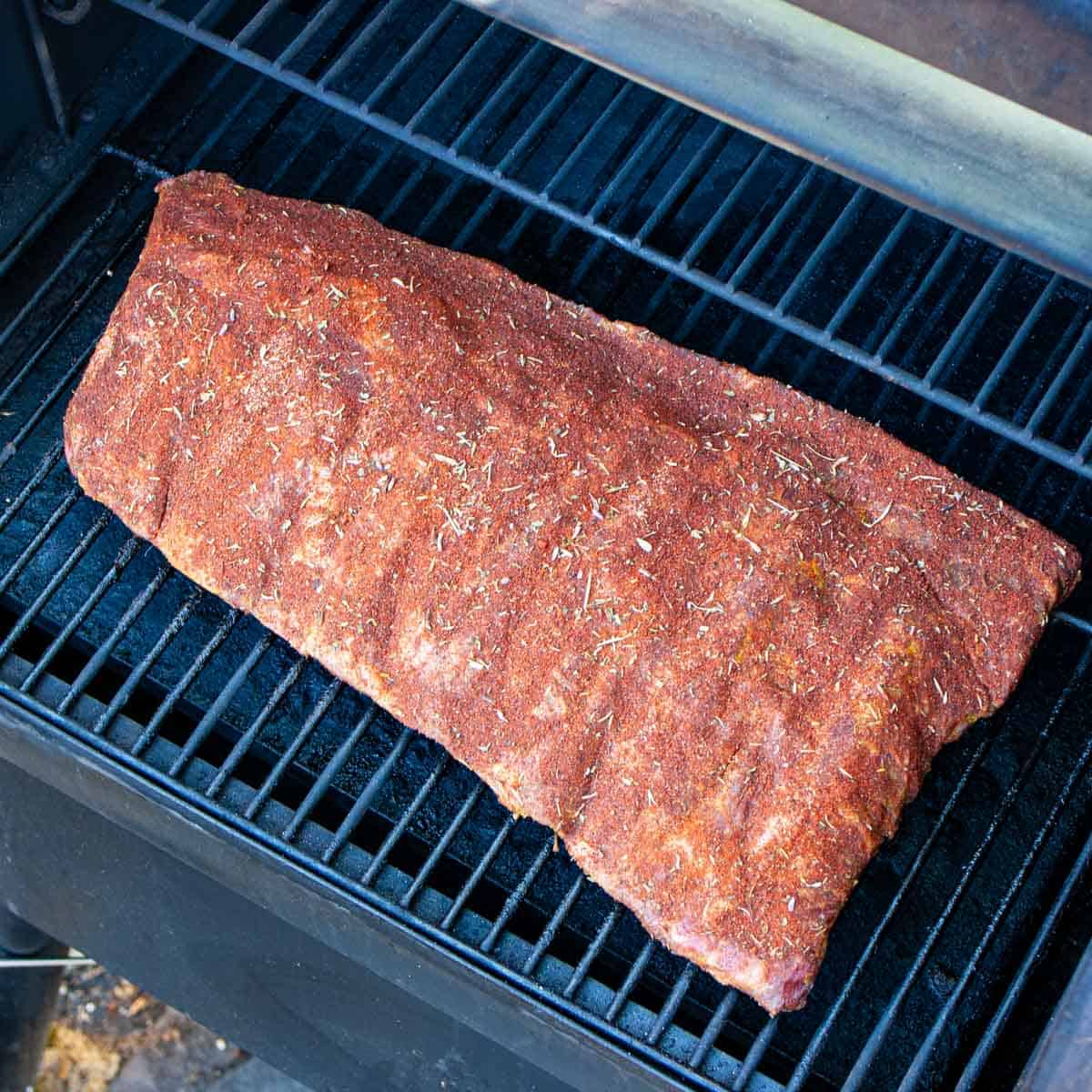
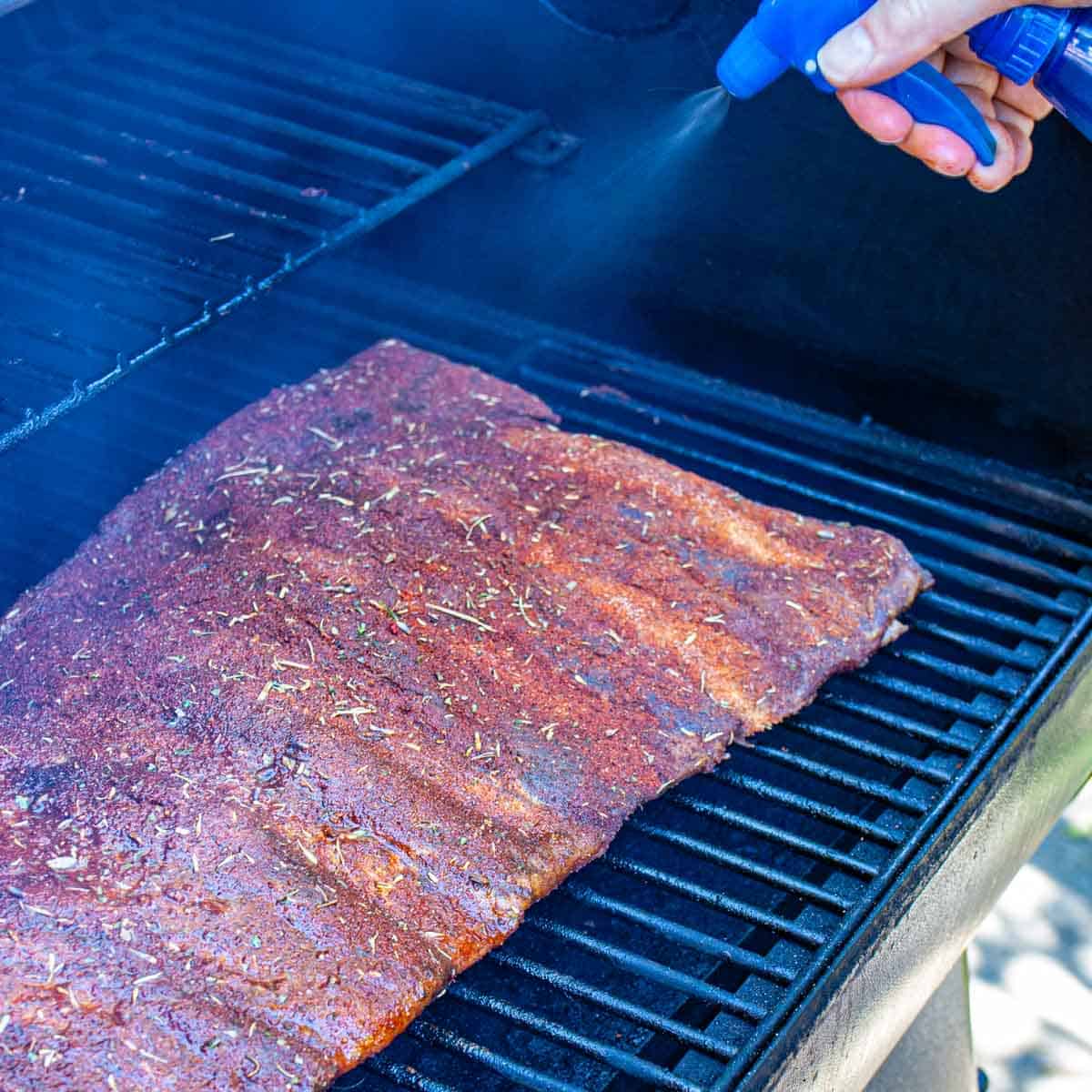
Smoking the rack
Place the ribs directly on the grill, bone side down.
TIP: I like to bring them up to room temperature before loading into the smoker, but this step is optional. Let them sit on the counter, uncovered, for about 30 minutes before putting them on the grill.
Spritzing
Prepare the 50/50 apple cider vinegar and water solution in a food-safe spray bottle.
Spritz the top of the rack with the vinegar solution after 1 hour and again after 2 hours. Spritzing allows them to absorb a bit of moisture and the vinegar works as a tenderizer.
Only spritz enough to dampen the ribs - you don't want to saturate them.
Why use an apple cider vinegar water spritz? A simple spritz for ribs made from vinegar and water provides added moisture, helps with color and improves texture. The vinegar breaks down collagen fibers, making the meat very tender.
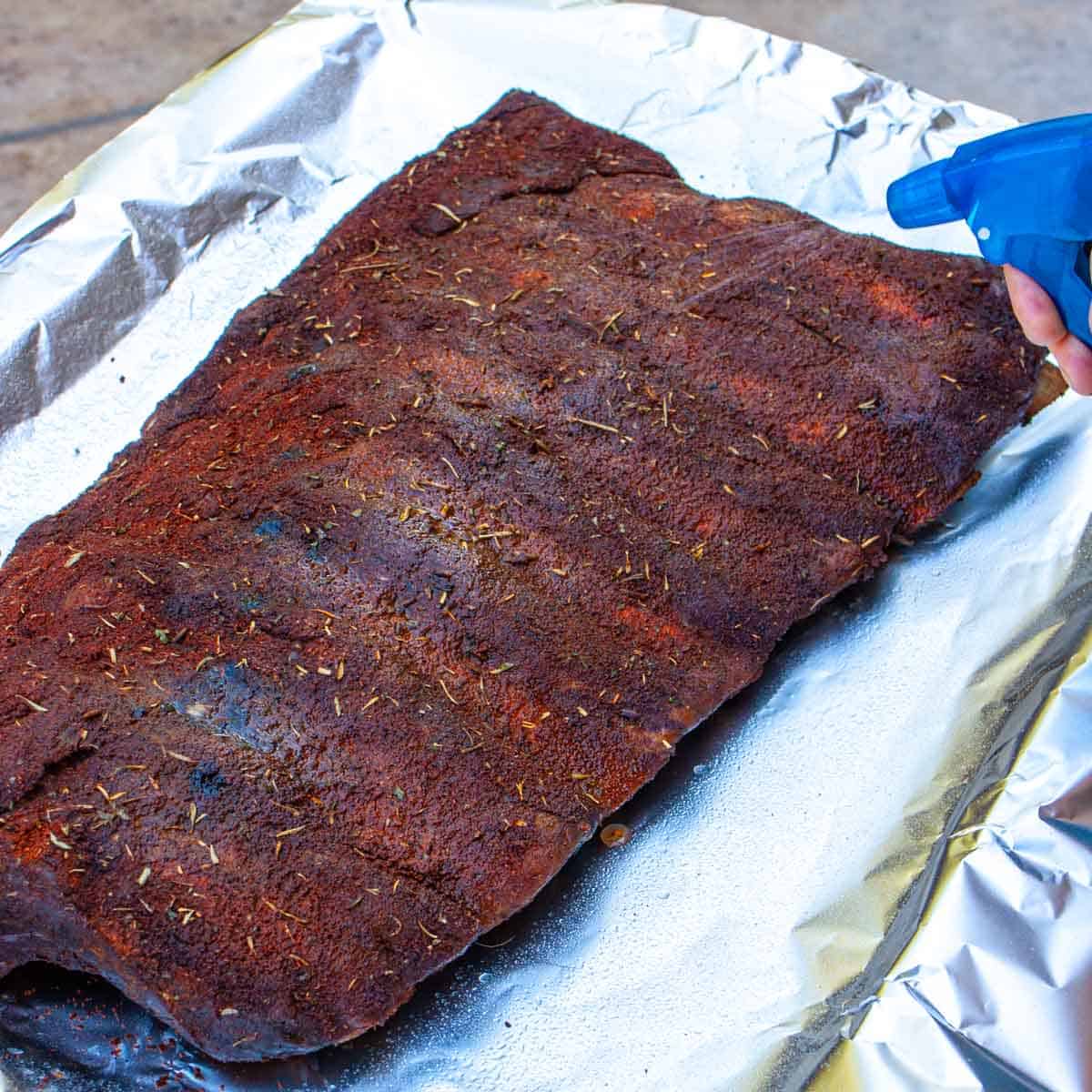
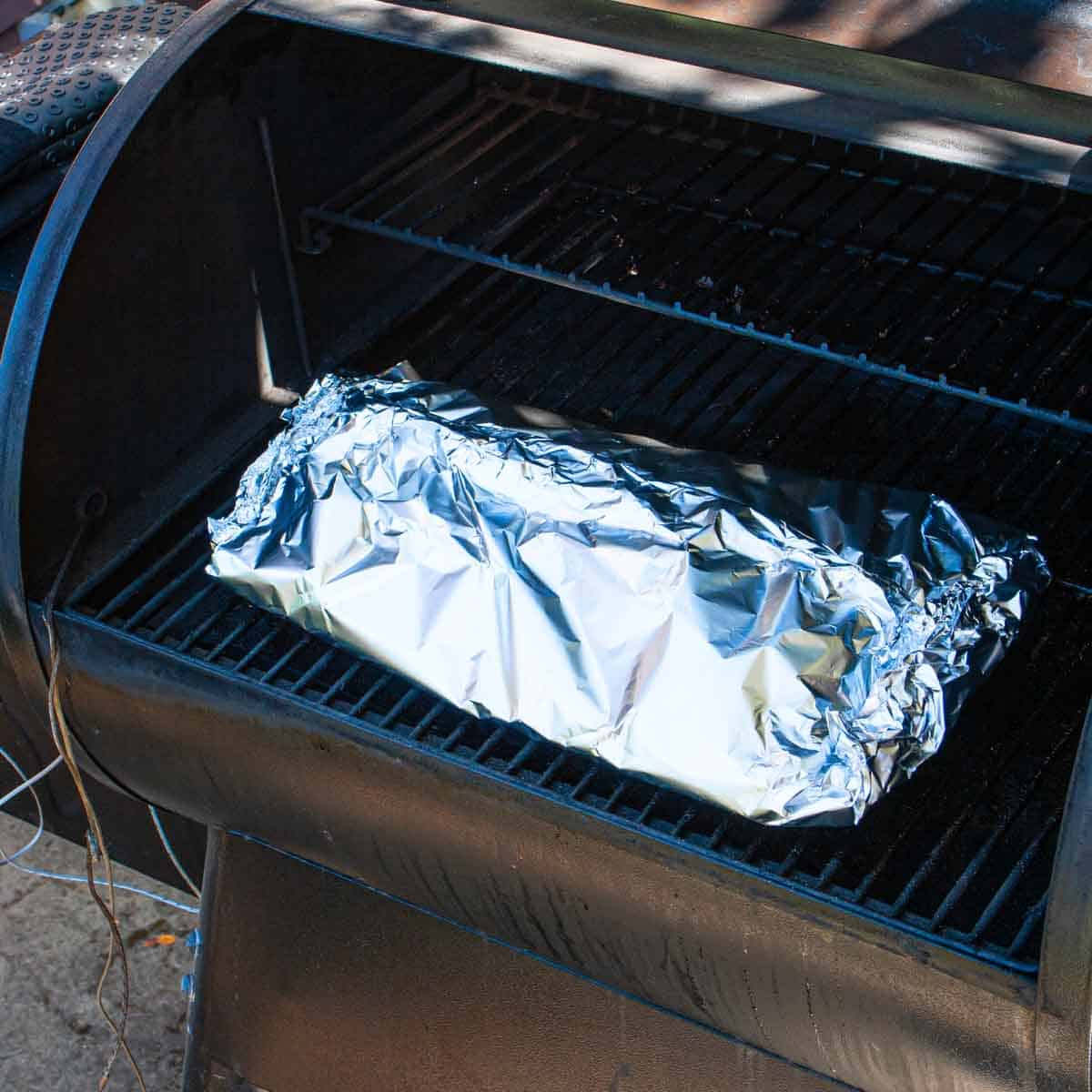
Wrap in foil
After 3 hours, remove the ribs from the grill and place on a baking sheet lined with two layers of heavy duty foil.
Turn the smoker up to 250F.
Spray once more with the vinegar and water solution. Wrap tightly to prevent leaks and place back on the grill bones down. Wrapping in two layers of foil prevents the bones from the piercing through, which would allow the juices to drip out.
TIP: Consider brushing the ribs with melted butter on both sides before the final spray of the vinegar solution and wrapping. This can add an additional layer of flavor and moisture while they cook in the foil.
Smoke for an additional 1.5 hours in the foil AT 250F.
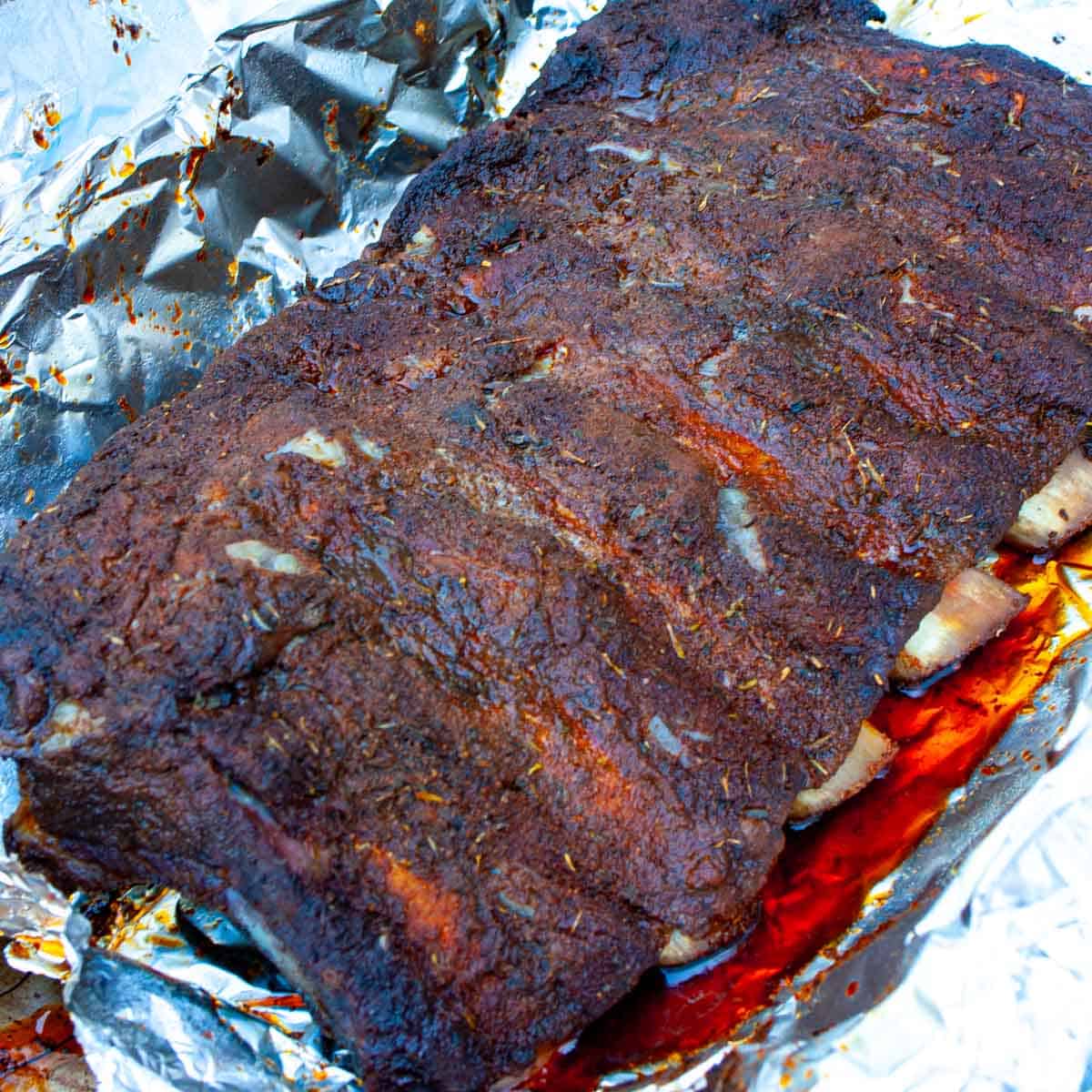
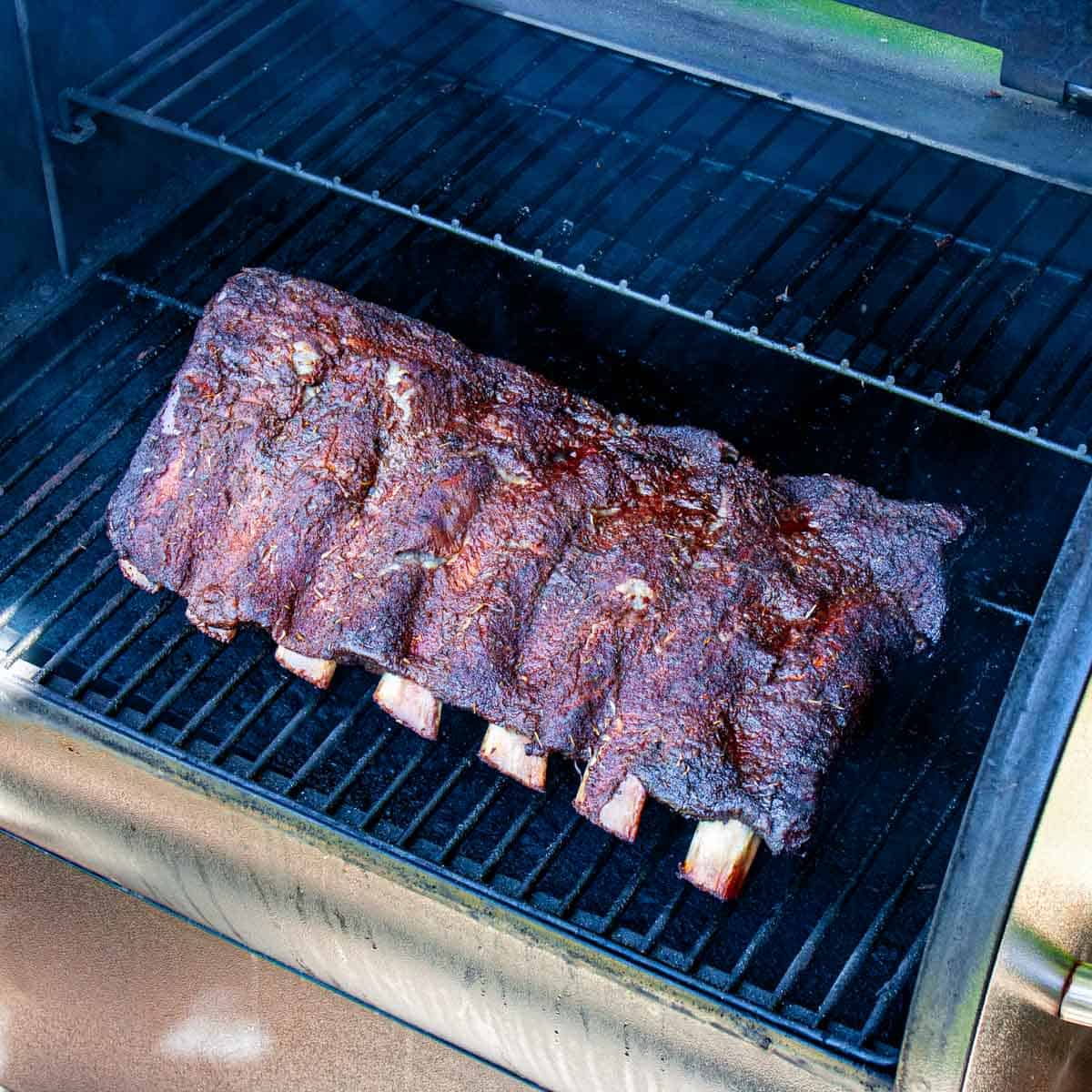
Remove from the foil
Take the foil-wrapped ribs off the grill, place on a baking sheet and remove from the foil. From here, the steps change slightly based on whether you are adding sauce or not.
No Sauce
If not adding sauce, place the rack back on the grill, bone side down, for 1 hour. This allows the surface to tighten and develop a crusty bark. Check on them during this last hour for doneness to your preference.
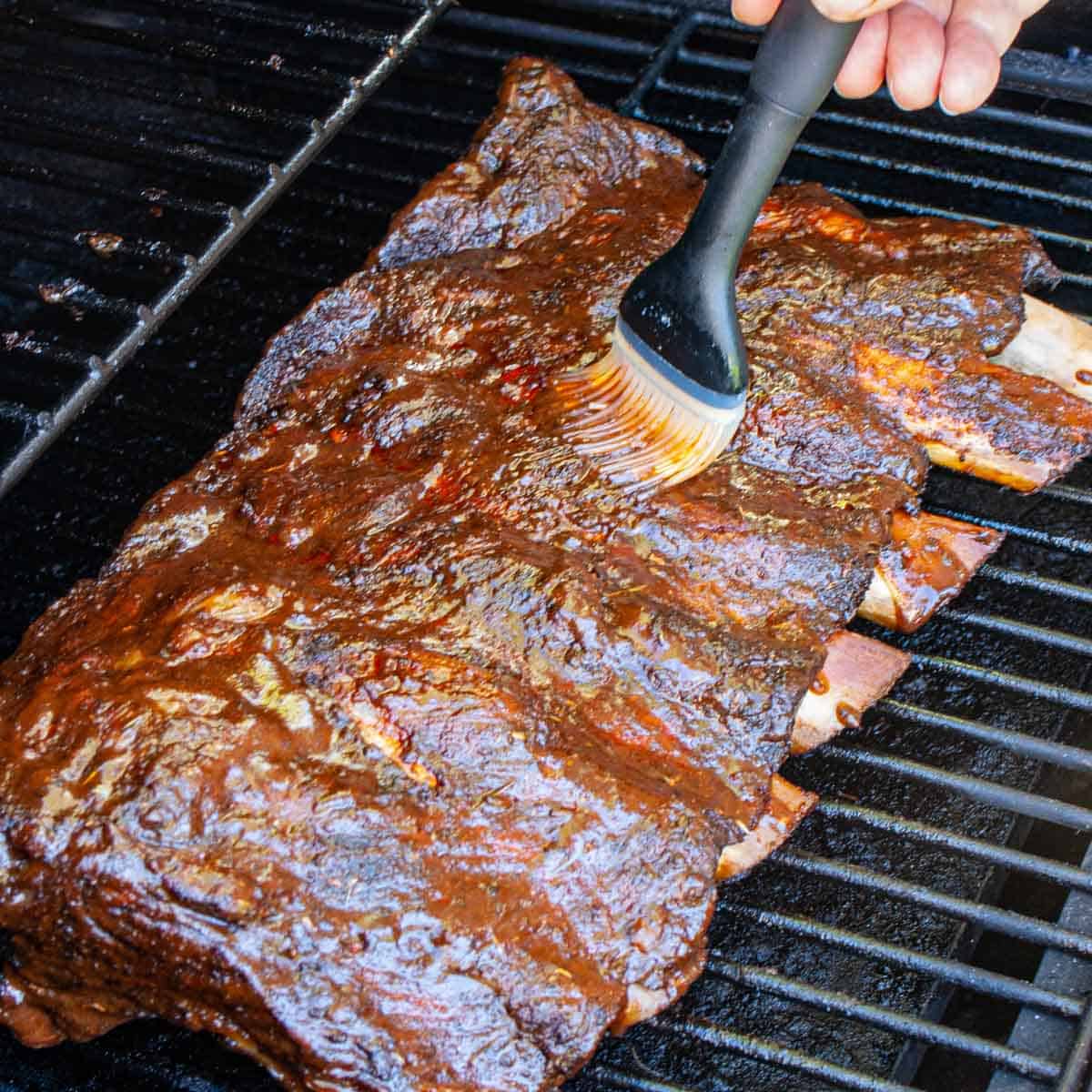
Apply the sauce (if using)
Place the unsauced rack onto the grill bone side down for 30 minutes to tighten the surface and form that great bark. Then, brush one or both sides with barbeque sauce and grill for another 30 minutes to allow the sauce to cook onto the bark. If you like them really saucy, you can apply sauce multiple times during this step. I apply only one layer for a light, slight saucy flavor.
TIP: It may be easier to remove the rack from the smoker for brushing. Applying the barbeque sauce can also be done while they are still on the grill. Depending on the size of the rack, they may be easier to handle when placed on a large baking sheet, brushed, then put back on the grill.
TIP: I like to warm the barbeque sauce in a small pot before applying it. This keeps the temperature consistent.

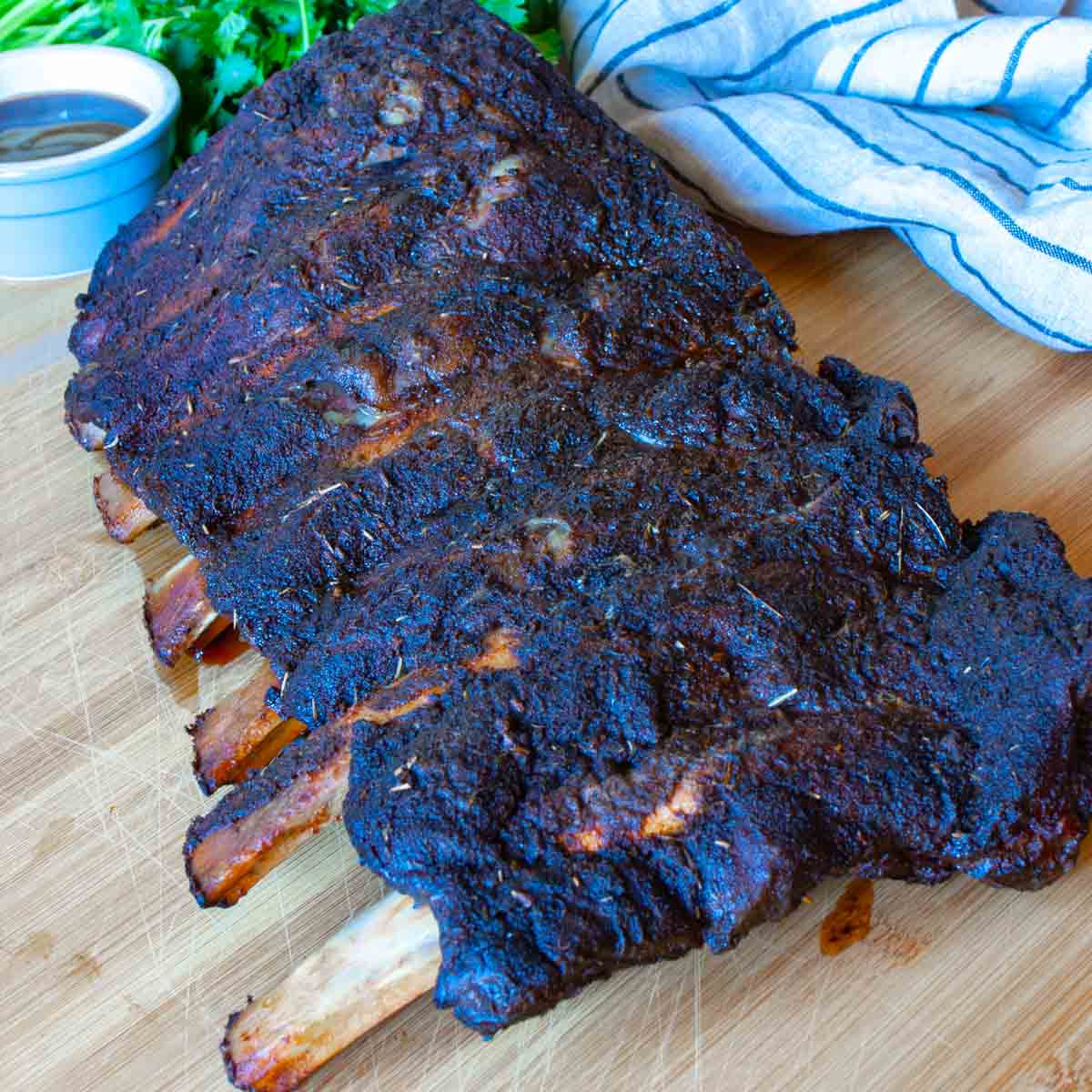
Remove from the grill
Remove from the grill, cover loosely with foil and a couple layers of cloth towels (to let them cool slowly), and let rest for 30 minutes, even though you will want to dig right in. I'm guilty of picking at the bark just a little bit... patience is hard!
TIP: Letting meat rest before cutting or carving allows the proteins to contract and gives the juices time to redistribute. This results in tender, juicy ribs.
Slice and devour.
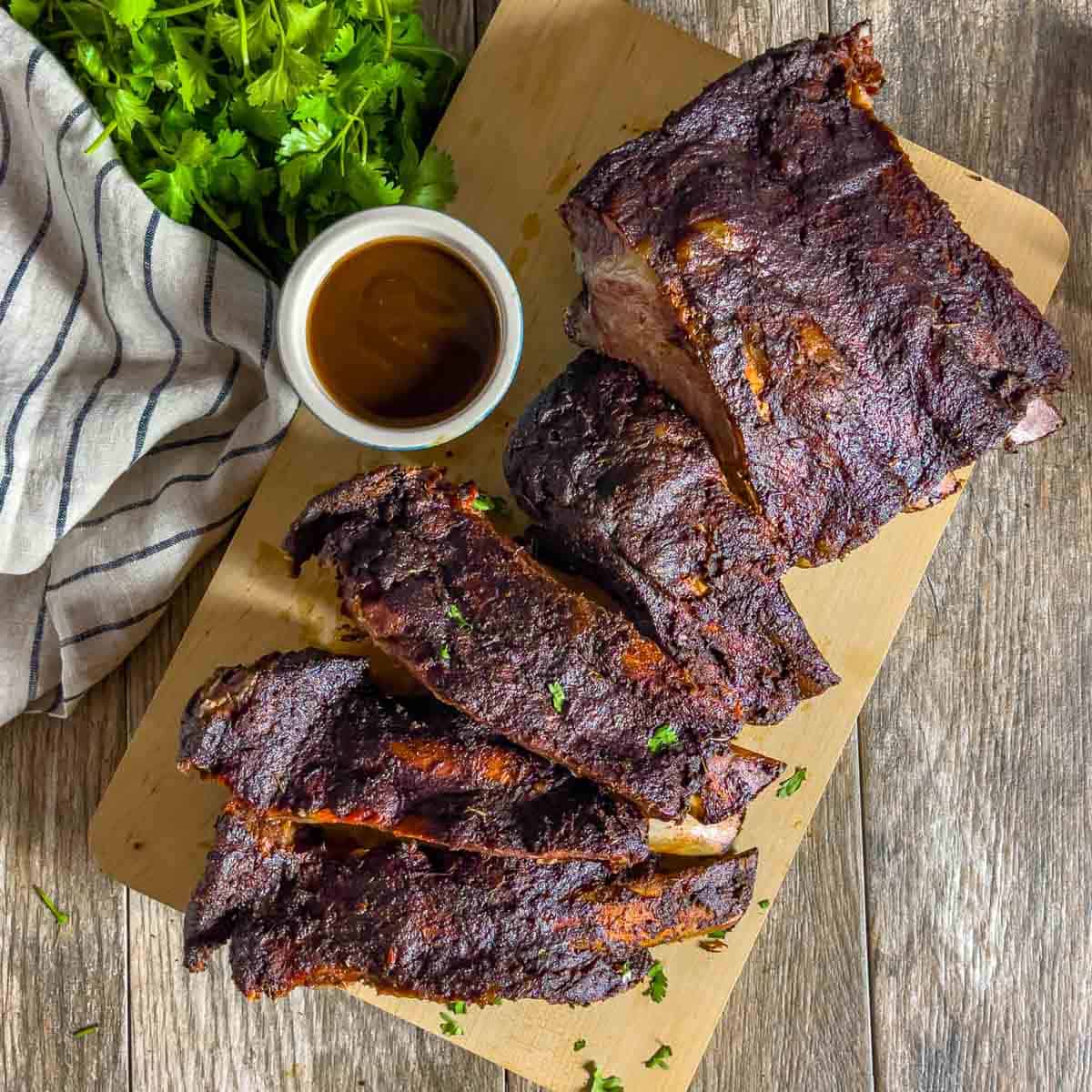
What to serve with Traeger beef ribs
- Serve with a delicious side salad, like a Keto BLT Salad with Shredded Kale or a classic barbeque favorite like coleslaw. Try my Keto Coleslaw with Cilantro and Lime!
- Bring out some healthy comfort food sides! Colcannon is the best replacement for mashed potatoes and is a perfect pairing with ribs. And, Maple Rosemary Brussels Sprouts are fast, easy and SO good.
- What’s BBQ without biscuits? Cheddar Almond Flour Drop Biscuits are buttery, cheesy 'Cheddar Bay' style biscuits and are a must for any cookout.
- Don’t forget dessert! I love these Easy Keto Brownies to top off good BBQ.
FAQ
When placing the rack on the grill with the bones facing down, the rack will cook more evenly and absorb more smoke flavor.
If testing with a probe thermometer, the internal temperature of the meat should ideally be between 190-205F. However, performing the ‘bend’ test and simply piercing with a skewer are easier ways to determine when they're done. If using a thermometer, be sure to insert the probe in the meatiest part of the rack. If testing too close to the bone, the temperature will read higher, as the bones retain more heat.
The ‘doneness’ is really personal preference. Barbeque enthusiasts and pitmasters don’t recommend smoking until meat falls off the bone. In fact, many consider that to be overcooked. Rib meat should have a little chew, with a tender and juicy texture, rather than fall-apart tenderness.
Whether to use your favorite bbq or mop sauce is entirely up to your tastes. Smoked beef ribs that have a crusty bark are perfection even without applying a final brush of sauce.
A crusty BBQ bark on ribs and other smoked meats is a combination of the rub, sauce and smoke from the smoker, combined with meat proteins. It’s a crisp, seasoned layer of flavor that is, essentially, caramelized due to meat being smoked at a low temperature.
Yes! This is a fool-proof method for smoking pork ribs as well as beef. I even use it for my Traeger smoked pork shoulder or smoked country style ribs.
No. This recipe can be made on any smoker. The perfect smoke is all about time and temperature, so any smoker will work great.
Let's talk barbeque!
Love this recipe? Please leave a rating in the recipe card section below! And, write a quick review in the comments section, just under the recipe card - I'd like to know what you think!
Barbeque is a thing of beauty! When you make this recipe, snap a picture and share it on your favorite social platform - be sure to tag me @rad_foodie!
Other recipes you might like
- Smoked Flank Steak
- Keto Coleslaw with Cilantro and Lime
- Easy Keto Carnitas
- Sautéed Brussels Sprouts with Maple and Rosemary
- Keto BLT Salad with Shredded Kale
- Crock Pot Pulled Pork
- Keto Colcannon with Rutabaga
- Cheddar Almond Flour Drop Biscuits
This post contains affiliate links. As an Instacart and Amazon Associate, I earn from qualifying purchases.
📖 Recipe
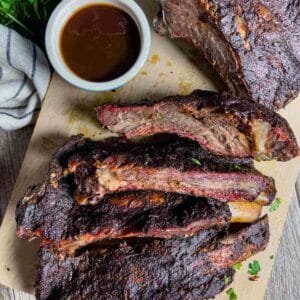
Traeger Beef Ribs
Ingredients
- 1 rack beef ribs
- 3 tablespoons yellow mustard
- ½ cup barbeque sauce (optional - I like to use my Easy No Cook BBQ sauce. See Notes for other favorites.)
Homemade BBQ Rub
- 2 tablespoons sweet paprika
- 1 tablespoon smoked paprika (or pimenton)
- 2 tablespoons sea salt
- 1 tablespoon black pepper
- 1 tablespoon garlic powder (omit for low-FODMAP)
- 1 tablespoon onion powder (omit for low-FODMAP)
- 1 tablespoon mustard powder
- 1 tablespoon chili powder (use chipotle powder for low-FODMAP)
- 1 tablespoon cumin
- 1 tablespoon allspice
- 1 tablespoon herbs de Provence
For the spritzing
- ½ cup apple cider vinegar
- ½ cup water
Instructions
Prepare the rub
- In a small bowl, mix together ingredients for the dry rub.
Prepare the ribs and smoker
- Set smoker to smoke setting, which is approximately 160-180 °F
- Remove the membrane from the rack if present (optional) by inserting a butter knife under one edge and lifting, then grabbing the lifted membrane with a paper towel and pulling it off in a sheet.
- Using a paper towel, pat the rack dry to remove excess surface moisture.
- Smear both sides with yellow mustard. (optional)
- Apply the rub. Sprinkle the top and bottom surfaces with a good coating of the dry rub.
Smoke time
- Place rack on the pre-heated grill, bone side down for 3 hours.
- Prepare the apple cider vinegar solution by mixing equal parts vinegar and water in a food-safe spray bottle.
- Spritz the top of the rack of ribs with the vinegar solution at the 1 hour and 2 hour mark.
- After 3 hours on the smoker, remove the rack and turn the smoker to 250 °F
- Place the ribs on 2 layers of foil and spray once more with the vinegar solution. Wrap tightly and put back on the grill.
- Smoke for 1.5 hours.
If not saucing
- Unwrap and put back on the grill, bone side down, for 1 hour - checking for doneness to your preference during the last half hour.
If using sauce
- Unwrap and put the unsauced rack back on the grill, bone side down, for 30 minutes.
- Brush one or both sides with barbeque sauce, and smoke for an additional 30 minutes.
Rest and serve
- Remove from the grill, cover loosly with foil and 2 cloth towels (to cool slowly) and let rest for 30 minutes.
- Slice and devour!
Notes
Tips for the best smoked barbeque ribs
- Remove the membrane. Some folks choose to remove the membrane from their ribs and some don’t. Most beef racks you purchase from the store or butcher will have this membrane removed. If the membrane is left on, the flavor will still penetrate through to the meat. However, it has a tough, stringy texture some people find unappealing.
- Try applying the mustard and rub the day before you smoke. Allowing them to marinate in the spices produces intense flavor that permeates the meat.
- I like to bring the rack up to room temperature before putting it on the smoker, but this step is optional. Let them sit on the counter, uncovered, for about 30 minutes before putting them on the grill.
- Consider brushing the ribs with melted butter before the final spray of the vinegar solution, when wrapping in foil. This can add an additional layer of flavor and moisture while they cook in the foil.
- Use two layers of heavy duty foil for wrapping to prevent tears and leaking.
- It may be easier to remove the rack from the smoker for brushing on barbeque sauce. Depending on the size of the rack, this step should be done on a large baking sheet.
- I like to warm the barbeque sauce in a small pot before applying it. This keeps the temperature consistent.
- Letting meat rest before cutting or carving allows the proteins to contract and gives the juices time to redistribute. This results in tender, juicy ribs.
- The transitions of wrapping the rack in foil, removing the foil and brushing with sauce will add to the total time.
For a low-FODMAP dry rub
Eliminate the onion and garlic powder and consider adding asafoetida (read about this amazing spice in my Asafoetida Ingredient Spotlight). See my complete Low-FODMAP Rib Rub recipe with variations in my Low-FODMAP Seasoning for BBQ post.RECOMMENDED BARBEQUE SAUCES
- Use my Easy No-Cook BBQ, my Low-FODMAP BBQ Sauce or Sugar-free Backyard BBQ Sauce
- Kinder's Original Sugar-Free barbeque sauce or Kinder's Sugar-Free Roasted Garlic for a keto-friendly sauce
- Fody Foods Low fodmap Unsweetened Chipotle BBQ Sauce for a low-FODMAP option.
Nutritional information has been calculated without the addition of barbeque sauce.
Nutrition
*Net carbs = carbohydrates - fiber
Nutritional information is an estimate, calculated using online tools and does not include optional ingredients unless otherwise indicated.

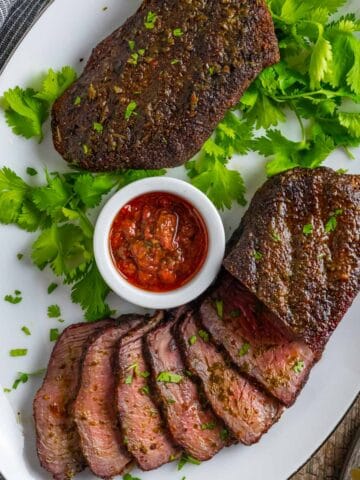

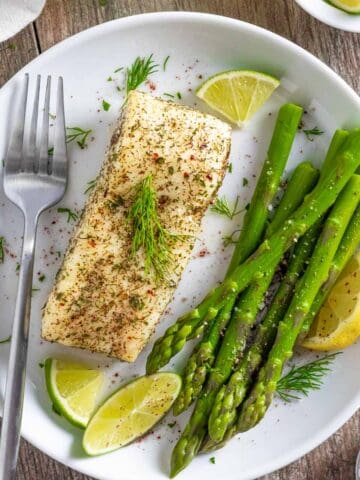
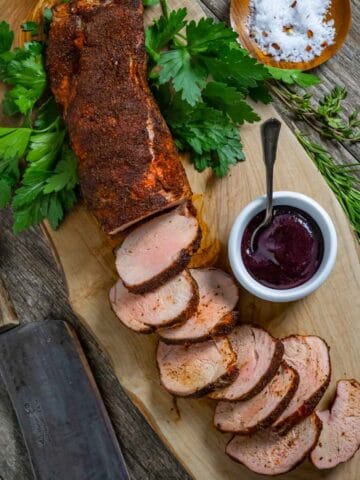
Mike B.
Followed the instructions to a T and after 6.5 hours can’t get the temp above 160? What am I doing wrong?
Tracey Hatch-Rizzi
Hi Mike,
It appears you have reached what's referred to as 'the stall', where the rise in temperature pauses before it starts rising again. There are many variables that can influence this: the size and thickness of the rack, variations with smokers, air flow, etc. Once all of the excess moisture from the rack evaporates, you'll see the temperature rise again. Typically. it happens between 150-170°F and is caused by evaporation of liquid on the meat's surface. It's totally normal and will resolve itself - you just have to wait it out.
Best,
Tracey
Marc
I made these with your bbq sauce and couldn't ask for better. Loved these.
Tracey Hatch-Rizzi
Hi Marc,
I'm so happy you loved them! I'm not sure which sauce recipe you used, but I'm so glad you liked it!
Best,
Tracey
Todd Smith
How do you cook beef ribs already cut at store?
Tracey Hatch-Rizzi
Hi Todd,
Great question. Though I've never cooked pre-cut ribs, I would prepare and cook them the same way I would cook an uncut full rack. From my experience, they should be just as tender and delicious. They will most likely have more smoky flavor since more surface area will be exposed, but they should also develop a nice bark all the way around the rib, which sounds particularly tasty. Let me know how they turn out!
Best,
Tracey
Adrian
Ribs have always been so intimidating to make and were always too tough. These were perfection! And the flavor is really special. It's savory and unique and my family loved them. I used your easy bbq sauce with ketchup too. I think I'll keep my smoker fired up all winter to keep making these! 6 stars - haha.
Tracey Hatch-Rizzi
Hi Adrian,
Thanks so much for letting me know how you liked these! I'm thrilled to hear that your family loved them and I hope you do keep on smoking in the cold months! We smoke pretty much year-round here and these ribs are frequently on the menu.
Take care,
Tracey
Paul
Easy recipe, outstanding taste. The ribs paired perfectly with the cilantro and lime coleslaw. Thanks
Tracey Hatch-Rizzi
Hi Paul,
Thanks for your comment and I'm happy to hear that you liked the ribs and the coleslaw! These ribs are one of my favorite things.
Cheers,
Tracey